Hold On To Your Genre : Noise Rock
Recommended Noise Rock Albums
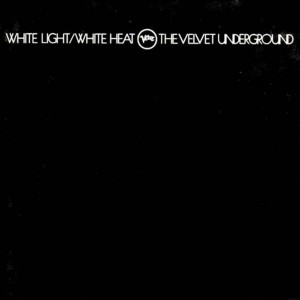 Velvet Underground – White Light/White Heat
Velvet Underground – White Light/White Heat
(1968; Verve)
Buy at iTunes
Everyone reading this article will have most likely heard this album. And nearly as many within that group likewise own a copy of White Light/White Heat. It’s a cult classic, a first-side-first-cut favorite of “High Fidelity”’s Rob Gordon, and an all around masterpiece of melodic antagonism. So, perhaps it’s an obvious starting point, but it’s also the starting point. Period. Noise rock was born in 1968 out of an artsy New York band’s bad trips. The anti-hippies of the ’60s, the Velvet Underground never seemed all that interested in peace, happiness and all that other bullshit (hat tip to Jimi). White Light/White Heat will never be mistaken for a flower-child album, and even on the eve of its 45th anniversary, it’s a pretty harsh listen. If that’s not an achievement worth celebrating, I don’t know what is.
I’ll be honest — I didn’t really get the album the first time I heard it, and for a while didn’t really understand what the big deal was. The songwriting is pretty simple, and even so, fairly off-putting. But the complete chaos of it all is pretty beautiful when given the time to assault the eardrums properly. Hearing it on vinyl certainly helped. On headphones this thing will rip your brain out. But there’s a kind of genius to the fucked-up methods the Velvets took on throughout White Light. The twisted narrative that John Cale reads on “The Gift” is surreally terrifying. Lou Reed’s jarring interruptions of Cale’s melodic verses on “Lady Godiva’s Operation” offer a subtle kind of musical terror-trolling. The title track is just great rock ‘n’ roll turned up and burned out. And all 17-minutes of the drugged out, pornographic “Sister Ray” is enough to cement this one in the pantheon of great American artistic achievements. No, this album definitely isn’t a gentle-touch experience, though this should be common knowledge by now. The Velvets brutalized rock music in cruelly bizarre ways, and if you’re ready for it, it’s a magnificent thing to hear.
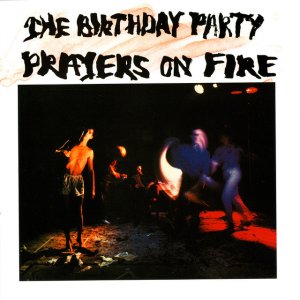 The Birthday Party – Prayers on Fire
The Birthday Party – Prayers on Fire
(1981; Missing Link)
Buy at iTunes
After the Velvet Underground, Lou Reed helped make noise in its purest form a viable(ish) musical form with the divisive experimentation of Metal Machine Music, but it still took a while before noise rock as a sound really took hold. Punk bands like Chrome, Flipper and Half Japanese, as well as no wavers like Sonic Youth and Glenn Branca carried on the spirit in new antagonistic ways. Though Australia’s The Birthday Party found a wholly new niche in which to poke and prod eardrums. Born of punk rockers The Boys Next Door, The Birthday Party’s sound was guided by guitarist Rowland S. Howard, whose reverb-heavy six-string style, while gnarly and piercing, drew heavy influence from rockabilly, The Stooges, blues and Captain Beefheart. Which is not to discount the ugly rumble of bassist Tracy Pew or the tom-tom laden sputters of Phil Calvert. Or Nick Cave, the group’s maniacal, misanthropic frontman, who really needs no introduction here.
There’s an argument to be had about what The Birthday Party’s true debut is, and that could be the band’s self-titled 1980 album, though that was originally credited to The Boys Next Door. The first album the group released after officially calling themselves The Birthday Party, however, was Prayers on Fire, perhaps not as widely recognized as their crowning 1982 punk-blues triumph, Junkyard, but every bit the violent and chaotic masterpiece its successor is. It features “Nick the Stripper,” for one, the sexually depraved single that became the basis for the charmingly titled “pigfuck” subgenre, as well as “Zoo Music Girl,” a horn-laden blast of psychobilly screech that comes across like “I Want Candy” on a really, really bad trip. But some of the most satisfyingly twisted moments are the ones that aren’t singles, like the relatively straightforward punk burner “Cry,” or the twisted rhythmic staircase of “Dead Song.” I’m hesitant to say that this is where noise got sexy, because it’s maybe a little too nightmarish for that to be true in any comfortable way. But this is where rhythm and noise found each other.
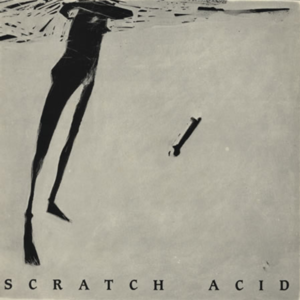 Scratch Acid – Scratch Acid
Scratch Acid – Scratch Acid
(1984; Rabid Cat)
Buy at iTunes
There’s a fairly strong argument that David Yow and David Wm. Sims made more noise together in The Jesus Lizard, at least in the sense that the band was such a loud, heavy beast of a reptile. But Scratch Acid was more noisy in the true sense of the word, playing a much more chaotic form of post-punk that, in its best moments, blended prickly shards of guitar and reverb with strong melodies and Yow’s unhinged screeches. The two bands shared more than a few aesthetic similarities, which is hard not to do when comprising 50 percent of the same personnel. But where The Jesus Lizard was the next step toward muscular post-hardcore, Scratch Acid was like Austin, Texas’ answer to the Birthday Party — fiery, unpredictable and more than a little unnerving.
Much like the Birthday Party and The Jesus Lizard, Scratch Acid also kicked immeasurable ass. Yow sounds a lot younger here, and at the time he was only 24, still quite a few years from having his yelp seasoned to its Maker’s Mark deranged best. All the same, he’s a perfect fit for the band’s fucked-up punk sleaze, which churns and punches with the best of ‘em, and is, at times, grandly ambitious, as when the band incorporates clanging bells on the furious “El Espectro or unexpectedly gorgeous strings on “Owner’s Lament.” Yow, for his part, is an almost terrifyingly physical presence, unleashing a frightening scream in more than a few songs, coughing up some bloody awful mess in “Mess,” and unleashing strangely funny, albeit disquieting lyrics, as when he pleads with the unseen title character in “Cannibal,” “Stop eating my heart!” But the place where the band comes together the strongest is “The Greatest Gift,” a short, catchy psychobilly stomp that’s just about the most fun thing here, if not the most overtly noisy. But with a freak like Yow screaming above it all, a little bit of noise goes a long way.
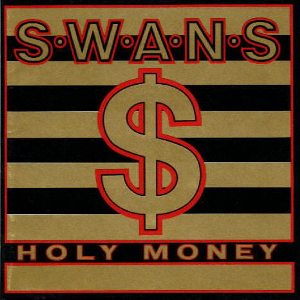 Swans – Holy Money
Swans – Holy Money
(1986; K.422)
Buy at iTunes
I’m not sure if I’m ready to declare Swans the most provocative band of all time, though they’re probably top 10. And I’m not sure if they’re the heaviest band of all time, though you’d be hard pressed to find a modern metal band who wasn’t at least partly influenced by the punishing New York post-punk band. But Swans, like the Velvet Underground on a somewhat smaller scale, very likely launched a few hundred, if not thousands of bands by merely creating something as intense and harrowing as they did. In the beginning they assaulted with noisy no-wave menace. Over time, however, they gradually grew more melodic, thanks in large part to the addition of avant garde vocalist Jarboe, who lent a sort of chilling dignity to Michael Gira’s otherwise scary-as-fuck dirges.
Companion albums Greed and Holy Money mark the turning point at which Swans became more of a song-driven band, rather than a noise-driven one, but even on up through their final opus, Soundtracks to the Blind, and post-revamp stunners My Father Will Guide Me Up a Rope to the Sky and The Seer, they remained a noise-rock band. Holy Money is arguably the band’s first “great” album, and a precursor to the double-album masterpiece Children of God, and likewise a moment in time in which the band’s experimentation with new textures was paying off in various ways. It’s still horrifying, of course, but rewardingly so. Harrowing dirges rarely sound so suspenseful and climactic as “Another You.” Pianos turn into weapons on “Fool (#2).” And beat-laden “A Screw (Holy Money)” is Swans getting their dance grooves out. Or as close to dance grooves as can be said of a band so melodically misanthropic. Gradually, Swans would grow prettier and prettier, to the point where Gira would abandon the name for a decade or so and play a slightly more nuanced style of music as Angels of Light. And here, you can almost hear traces of that transformation beginning to take root. Almost.
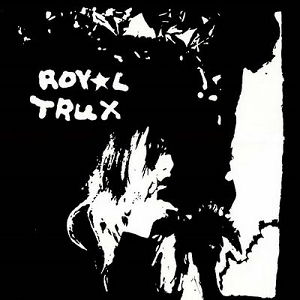 Royal Trux – Twin Infinitives
Royal Trux – Twin Infinitives
(1990; Drag City)
Buy at iTunes
I’m not sure that there’s a person on earth who heard this album for the first time and didn’t immediately think, “What the fuck is this shit?” Royal Trux have been a lot of things over the years — noisy, sleazy, druggy, silly, bluesy, even funky. But this is the one instance in which the band was seemingly impenetrable. Twin Infinitives, essentially, is a shambling mess of a record, caked in reverb and shit-fi recording techniques. Sometimes it’s hard to know exactly what’s going on at any time, but the longer you listen, the more shapes begin to form. And eventually, it turns into a pretty damn compelling piece of work, but it doesn’t reveal itself immediately. Frankly, I’m not even sure the band wanted anyone to get it; originally released as a double-LP, the CD version presents each side as a single track, no matter how many songs are contained therein. So, you get four tracks that run about 16 minutes each, without anything else to separate its songs, if you want to call them that.
Because of this unconventional, potentially antagonistic form of organization, it’s almost irrelevant to try to discuss the songs on their own. But Twin Infinitives is a triumph of some sort. It may not seem that way at first, but in the end, it’s not that far off from White Light/White Heat, it’s just twice as long and potentially made on twice as many drugs.
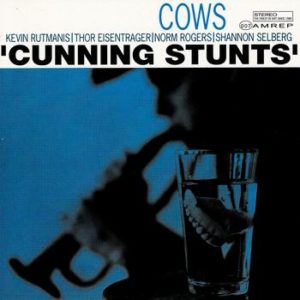 Cows – Cunning Stunts
Cows – Cunning Stunts
(1992; Amphetamine Reptile)
Buy at iTunes
If The Jesus Lizard had the most notorious reputation in all of noise rock, then Minnesota’s Cows were at least a pretty close runner up. When the group first began releasing records in the late ‘80s, their sloppy, agonized muck rubbed a lot of folks the wrong way. But even after they began to figure out how to turn their grotesque sludge into a more melodic sound, frontman Shannon Selberg still managed to command a pretty troubling stage presence, performing in various states of costume or undress, sometimes clad only in shaving cream, at other times enrobed in a re-fashioned sex doll’s rubber skin. And more than a few times he had been known to break beer bottles on his own forehead.
Around 1992’s Cunning Stunts (named for a well-trafficked spoonerism punchline), the band had arrived upon the strongest iteration of their sound, one far catchier than it had any right to be, and brimming with abrasive musicality. Opening track “Heave Ho,” for instance, injects a one-note trumpet hook into an otherwise grungy punk song, while “Contamination” fashions a dense, almost shoegaze texture from slide-guitar riffs. The real treat is in how the band matured into excellent songwriters, however. Certainly, Cunning Stunts is a noisy album, and a raw, raucous one at that. Still, it has some unusually catchy moments, like the sing-along rocker “Mine,” or the suspensefully harrowing closer, “Ort.” While Cows certainly hadn’t transformed entirely from being guitar-wielding misanthropes, their shtick became more approachable and accessible. This is where everything comes into perfect balance.
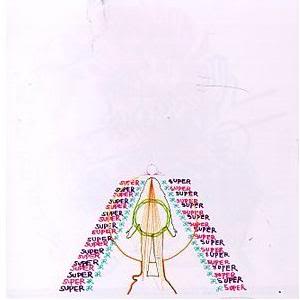 Boredoms – Super æ
Boredoms – Super æ
(1998; Birdman)
Buy at iTunes
Japan’s Boredoms once emphasized noise a lot more than rock. Look to their 1989 album Soul Discharge for the full scope of this — manic screaming, banging like lunatics on anything that would make a sound, and a few melodies here and there, between the cracks of their screeches and clanks. It was awesome, of course, and this approach won over the likes of Sonic Youth and Nirvana, which may have led to the band getting a major label contract, which wasn’t quite so rare in the ‘90s. Over time this would evolve into a more sophisticated, hypnotic, even melodic form of noise rock that borrowed more explicitly from krautrock and minimalism. Their 1998 album Super ae is basically the meeting place between Neu!’s motorik grooves and Terry Riley’s minimal pulses. Not that they weren’t kindred spirits to begin with…
So, Super æ is maybe more rock than noise, but it’s still noisy. But it’s less chaotically noisy, and more of a controlled ruckus. Yoshimi P-We can still beat the living snot out of a drum head, and Yamantaka Eye is still a human exclamation point, it just congeals into a stronger whole. The songs are longer, more progressive, more spaced-out. “Super Are” has a fairly peaceful calm about it, focusing on a simple, subdued keyboard melody until breaking out into a thundering climax. “Super Coming” is a bit more silly, with members of the band breaking into goofy voices, which is a lot more effective than it sounds. And “Super Shine” is an extended jam worth getting behind, its 12 minutes hitting a repetitive groove that’s a little raw, a little discordant, but almost meditative at the center of its chants and pulses. There may very well be a religious ritual at the center of this album, but whether sectarian or not, it’s transcendent.
Note: Sonic Youth was not included in this future only because it’s ground we’ve covered extensively in the past. However, it should be noted that EVOL, Sister and Daydream Nation are all noise rock essentials.
You might also like:

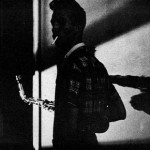
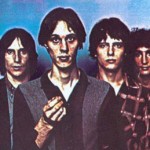
Jeff Terich is the founder and editor of Treble. He's been writing about music for 20 years and has been published at American Songwriter, Bandcamp Daily, Reverb, Spin, Stereogum, uDiscoverMusic, VinylMePlease and some others that he's forgetting right now. He's still not tired of it.

